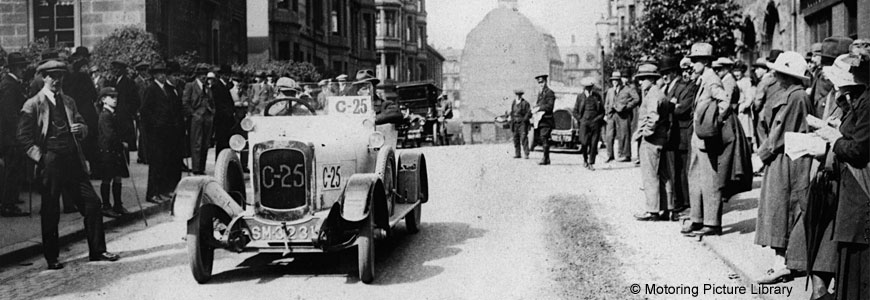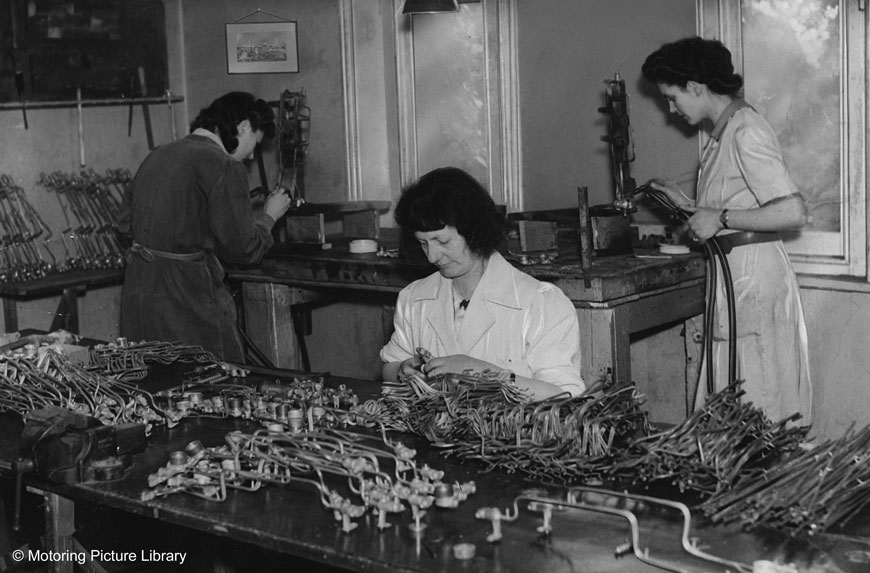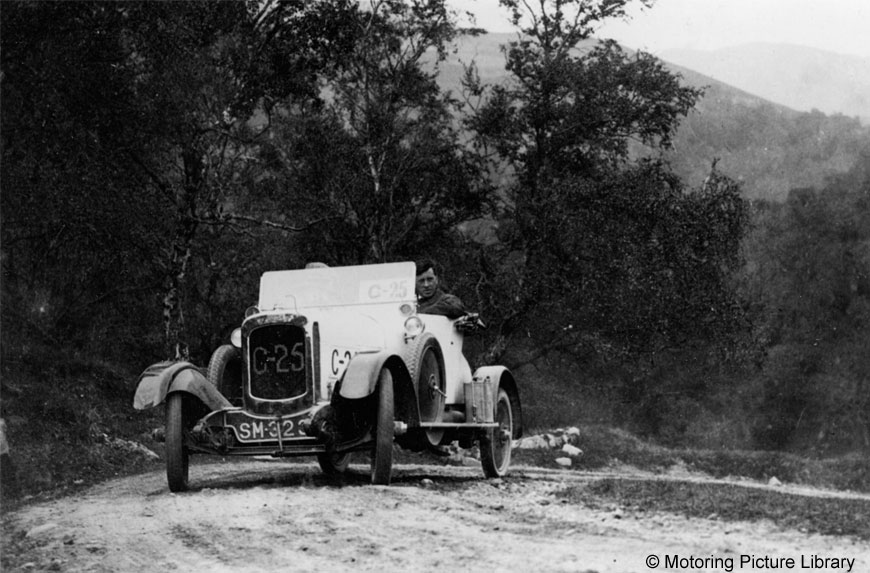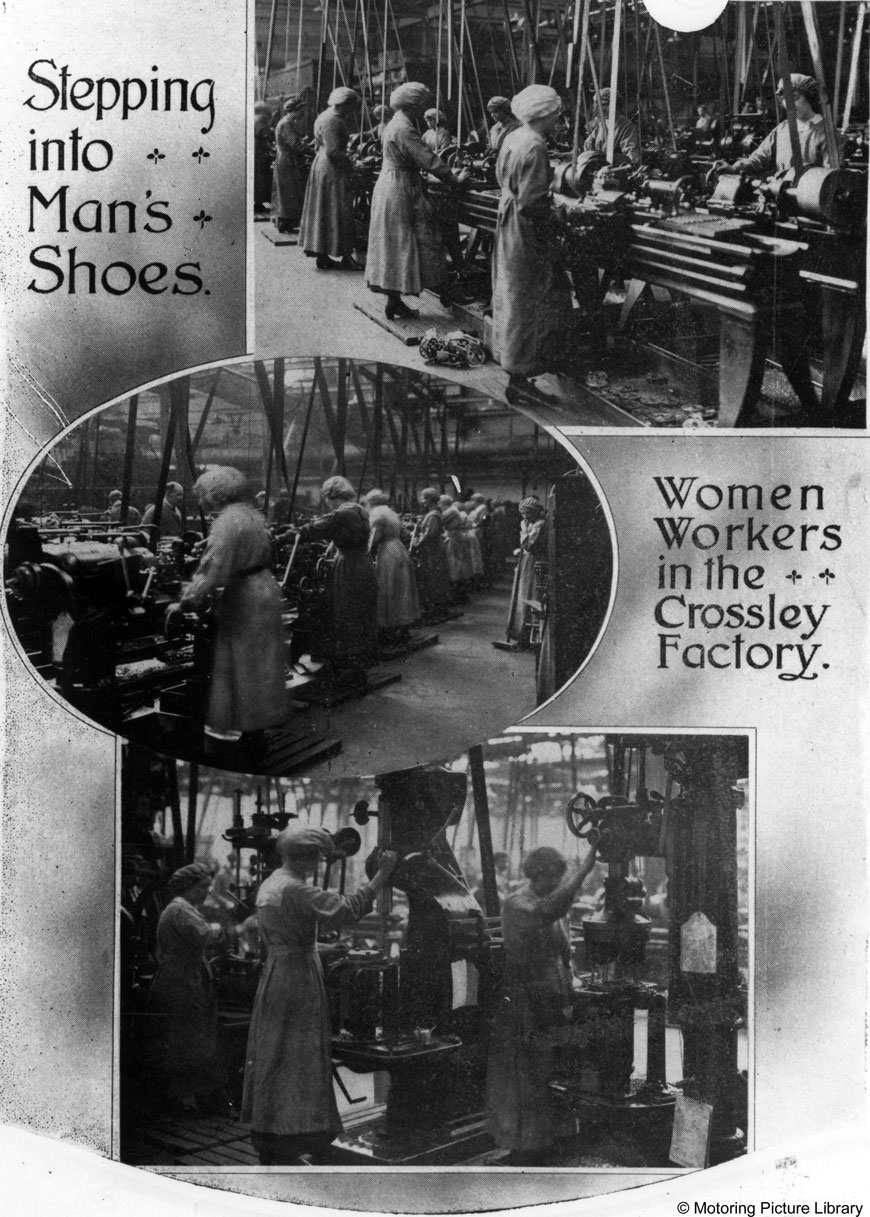
A pioneering businesswoman and automobile engineer, Dorothee Pullinger was truly a remarkable woman whose unfailing ambition and commitment to equal opportunities earned her a well-deserved place in motoring and social history.

WOMEN ARE NOT PEOPLE!
Born in France on 13th January 1894, Dorothee was the eldest daughter of engineer, Thomas Pullinger and his wife, Aurelie Berenice. The family moved to England in 1902 and at the outbreak of World War One Dorothee applied to join the Institute of Automobile Engineers – but was refused on the grounds that the word ‘person’ only applies to a man!
Persevering and determined to succeed, Dorothee’s opportunity came when she was appointed Female Supervisor at Vickers Munitions Factory. Placed in charge of a female workforce who manufactured high explosive shells, she was responsible for approximately 7,000 workers. In 1920 she was awarded an MBE in recognition for her work – and was finally accepted into the Institute!
A FATHER’S SUPPORT
Thomas Pullinger had always strongly believed in his daughter and women in general, saying they were born mechanics, working with their hands and learning with astonishing rapidity. In fact, it was Thomas who first employed Dorothee as a draftsperson at Arrol-Johnston, the company where he was Managing Director. In 1916 he decided to set up a new Arrol Johnston’s munitions factory, to include an engineering college and apprenticeship programme for women. This showed great foresight and fortitude, coming at a time when men dominated engineering and industry and working women often faced criticism as they were regarded as stealing men’s jobs.
The factory had very modern facilities including a tennis court on the roof, library and writing room complete with piano. The thoughtfully worded prospectus invited educated women, for whom a life of independence from relations is necessary, a new career with brilliant prospects. It is also interesting to note that the indentures would be three years instead of the usual five year apprenticeships for men – a significant move at a time when working women faced fierce opposition.
GROUNDBREAKING DESIGNER
In 1920 Thomas put his daughter in charge of production of the Galloway automobile. Designed along the same lines as the Fiat 501, the Galloway was essentially a light car with a 1.5 litre four cylinder engine and 10-20 horsepower.
At a time when time cars tended to have big heavy body styles (which made clambering in and out of them challenging) Dorothee recognised the need for a new design which would take into account the smaller stature of female drivers. Some of the models included a raised seat to improve side vision, a smaller steering wheel and lowered dashboard, additional storage space and a fixed interior rear view mirror. Another significant improvement was that the gear lever was mounted inside (rather than outside) the car.
Dorothee proved to be a born leader, showing resilience and combining both innovative and engineering flair. She will be remembered as Scotland’s only female motor manufacturer.

RACING, POLITICS & FAMILY
It was not all work for Dorothee. Like many pioneering women of her time, she was keen to prove herself behind the wheel and she regularly competed in the Scottish Six Day Trials, winning with the Galloway in 1924.
Dorothee was also unfailing devoted to equal opportunities and this was reflected in her female workforce wearing company badges in the suffragette colours of green, white and purple.
In 1924 Dorothee married Edward Marshall who had been employed as a ship’s purser on the P&O passenger liner, SS Naldera. They had two children, Yvette and Lewis. In 1928, following the closure of the Arrol-Johnston plant, Dorothee and her family relocated to Croydon, setting up White Service Laundries. This had its own power station and arterial well as well as the latest steam machinery from America. The business proved successful, eventually expanding to seventeen shops with Dorothee stating that ‘washing should not be doing men out of a job.’ The company was sold in 1946.

LATER YEARS
During WWII Dorothee was responsible for setting up the Women’s Industrial War Work Programme for Lord Nuffield, which involved recruiting women into a number of munitions factories. She was the only female member appointed to serve on the Industrial Panel of the Ministry of Production.
Following WWII, she joined the Conservative and Unionist Party, serving on a panel to address post-war problems and contributing to the 1944 Report, ‘Looking Ahead: Work and the future of British Industry.’
In 1947, Dorothee and her family moved to Guernsey, where she established Normandie Laundries. She and her children remained on Guernsey until her death at St Peter Port on 28th January 1986.
ACHIEVEMENTS & LEGACY
A founding member of the Women’s Engineering Society, Dorothee’s achievements were truly outstanding and she was an inspiration to many.
Despite great progress, the engineering industry today is still dominated by men and Dorothee’s dedication and commitment to equal rights will no doubt continue to inspire women (and men) for many years to come.
Next time: step into the world of the beautiful and charismatic Eleanor Thornton, an absorbing love story… truly the Spirit of Ecstasy.
Sarah Crofts has been sharing her passion for motorsport with Beaulieu’s visitors since she first joined as a volunteer in 2007. Now a Museum Attendant, she has grown to love her role more and more and can’t imagine doing anything else! Sarah’s popular Women in Motorsport tour is one of several daily tours on offer in the National Motor Museum.
